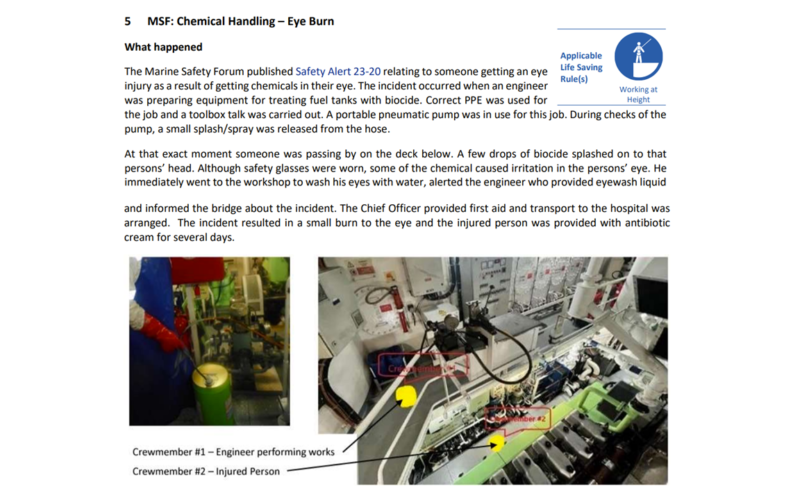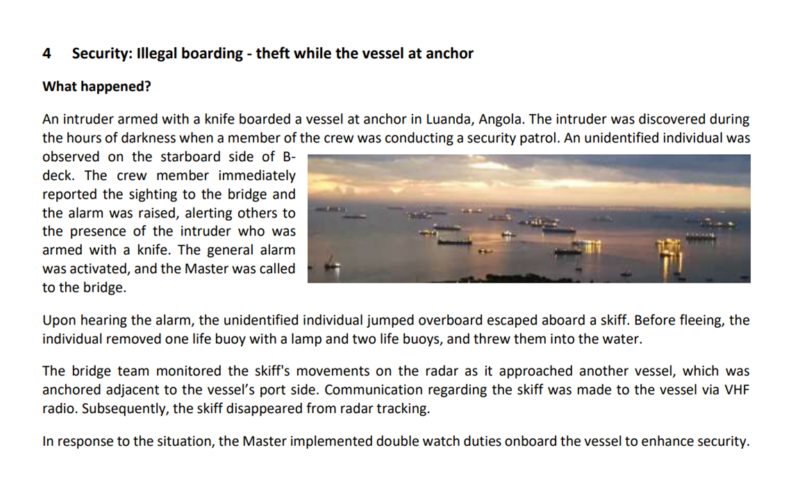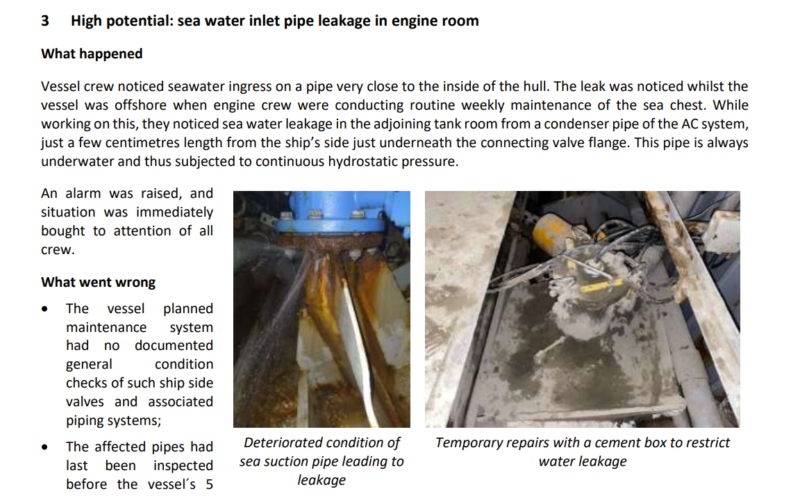Cause & Consequence
- Moving vehicle or vessel
Incident Location
Drilling unit
Incident Activity
Any Activity Type
Specific Incident Equipment
Air Compressor, Coolant Radiator, Cooling fan
Lessons Identified
Many lessons can be learned from this incident, both from a personal and from a vessel management point of view. Although this incident happened on a vessel outwith U.K. waters where legislation such as PUWER does not apply, surely owners and managers must ensure that their equipment is in safe condition and their people are taking all precautions required to work in a safe manner. Couldn't happen here !, OR COULD IT?. This should be taken as a wake up call to all of us to check our machinery spaces and look closely at how we really carry out our business. Look closely at the picture of the machinery on the attached safety alert and ask yourself whether or not you have seen something like that recently. Ask yourself why people are continuing to accept unguarded and dangerous equipment and follow unsafe work practices on a day to day basis.Its too easy for us to assume that the external auditor should pick up potential hazards like this when the duty lies primarily with our onboard managers such as OIM’s, Masters, Chief Engineers and, with the individuals themselves who are carrying out the task. Here in UK waters, where any vessel, not just UK flag vessels, must comply with the legislative requirements of the UKCS, we have a duty of care in law to comply with the requirements or suffer the consequences directly. Regardless of where we are, whether we be Owners, Managers, Masters, do we not have that same duty of care to our vessel and our people ?. It is but a simple task to carry out an “in house” compartment survey to determine where any hazard lies and then do something about it. If the hazard is removed then that’s half the battle. The other half of the battle is getting people to behave in a responsible manner and look after their safety by raising awareness of the hazards onboard and taking basic precautions such as risk assessing tasks and carrying out isolations where required .
Incident Recommendations
Ensure that all such tasks are adequately risk assessed and that all mitigating actions are actually in place.--Ensure that ALL potential hazards are noted and that isolations are carried out, particularly where there is the hazard of auto start machinery.--Ensure that task participants are aware of all hazards involved in any task, heighten hazard awareness regarding power sources. familiarity with Step Change Task Risk Assessment Guidance is a good place to start
Rate this alert
Average Rating
Latest Alerts & Moments
Our searchable catalogue of hundreds of Safety Alerts and Safety Moments are all designed as learning resources that can help improve workplace safety.


